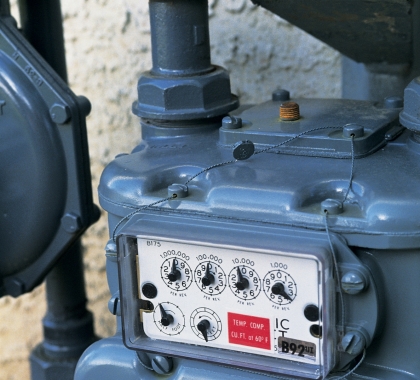The increase in the price of natural gas across the U.S. is likely to impact local electric and natural gas utilities and their customers this winter.
Higher natural gas market prices impact not only natural gas utilities but electric utilities as the price of natural gas typically drives the overall price of wholesale electricity markets.
The market price for natural gas in the U.S. has increased significantly since 2020, when the market spot price for natural gas was in the low $2 per MMBtu range. Since then, it has risen at times to more than $9 per MMBtu. Currently natural gas prices are fluctuating between $5-7 dollar per MMBtu and remain highly volatile.
The market price for natural gas is primarily impacted by the interplay between supply and demand. The current high market price is the result of a low supply/high demand environment. Natural gas storage levels remain significantly less than the five-year average. Contributing factors include:
- Natural gas production decreased significantly during the 2020 pandemic year.
- After the pandemic year, demand (usage) in the U.S. increased, while production lagged behind.
- More natural gas is being used for electric power generation, which contributes to lower supply. The stronger demand for natural gas by the electric power sector is due primarily to the transition to more renewable energy.
- Exports of Liquified Natural Gas (LNG) are steadily rising, especially to meet the demand in European and Asian markets where prices are significantly higher. The Asian spot market is averaging $38 per MMBtu and Europe is at $53 for the upcoming winter.
- Significant demand for natural gas has kept storage levels below the five-year average. The U.S. Energy Information Administration (EIA) forecasts indicate storage levels will be 6% below the five-year average by the end of injection season in October.
In October, the EIA's Short-Term Energy Outlook projected natural gas prices to average in the $7/MMBtu range through the rest of 2022 and then fall below $6/MMBtu in 2023 as production slowly increases to better meet demand.
Natural gas and electric utilities impacted
The Municipal Energy Agency of Nebraska (MEAN) has seen significant increases in power prices in wholesale electricity markets. MEAN has a diverse power resource mix that includes electric generation ownership and power purchase agreements. These resources are economically dispatched by the market, providing revenues to help offset some of the cost of market purchases to serve electric load.
The National Public Gas Agency (NPGA) uses a diverse portfolio of gas supply to mitigate market price spikes. Through NPGA’s board-directed hedging program, a portion of members’ anticipated use is hedged more than a year in advance, which serves to level the cost of gas, mitigates forward-exposure to commodity risk and provides savings to members during times of a rising spot market.
Most ACE (Public Alliance for Community Energy) customers are on a fixed rate option for their natural gas. However, since natural gas rates have significantly risen the past couple of years customers are likely to notice higher heating bills this winter. In addition, since natural gas prices are expected to remain higher for the 2023 Choice Gas selection period next spring, customers may see higher rates for the 2023-24 gas year, which runs June 1, 2023-May 31, 2024.
For utilities, now is a good time to remind customers how to save on their winter utility bills through energy efficiency.
MEAN, in partnership with the local electric utilities it serves, provides a suite of energy efficiency programs that offer cash incentives paid directly to customers to help cover the cost of energy efficient upgrades. Program information and applications are on MEAN’s website.

